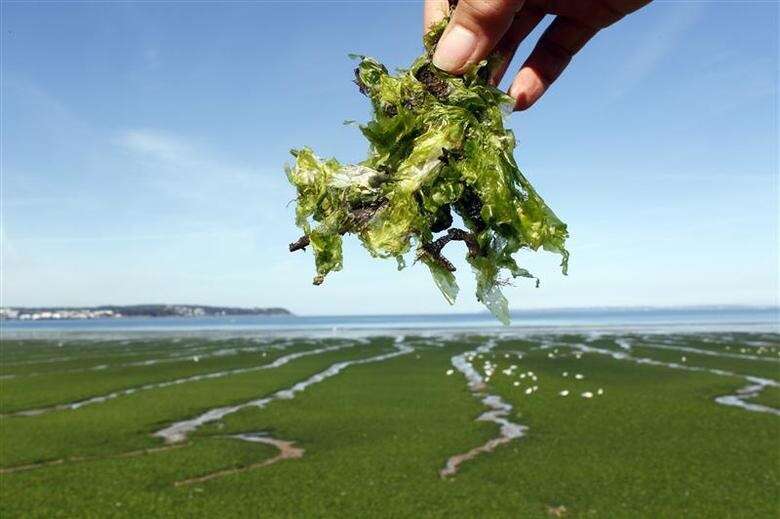Idea comes to doctoral student Yaniv Shlosberg while swimming at the beach. "It is a wonder where scientific ideas come from," he says.
By ILH Staff
01-02-2022 1

Seaweed is grown for a variety of industries, including food, cosmetics and pharmaceuticals. | File photo: Reuters/Mal Langsdon
Researchers from the Technion – Israel Institute of Technology have developed a method that harvests an electrical current directly from seaweed in an environmentally friendly and efficient fashion.
The research, the idea for which came to doctoral student Yaniv Shlosberg while swimming at the beach, has been developed by a consortium of researchers from three Technion faculties and has been presented in the peer-reviewed Biosensors and Bioelectronics scientific journal.
The research was led by Professor Noam Adir and Shlosberg in cooperation with researchers from the Israel Oceanographic and Limnological Research Institute and others.
The use of fossil fuels results in the emission of greenhouse gases and other polluting compounds, which have been found to be connected to climate change. Pollution due to the use of these fuels starts from their extraction and transportation around the globe, to be used in centralized power plants and refineries.
These problematic issues are the driving force behind research into methods of alternative, clean and renewable energy sources. One of these is the use of living organisms as the source of electrical currents in microbial fuel cells. Certain bacteria have the ability to transfer electrons to electrochemical cells to produce electrical current. The bacteria need to be constantly fed and some of them are pathogenic. A similar technology is Bio-PhotoElectrochemical Cells, the source of electrons can be from photosynthetic bacteria, especially cyanobacteria.
Many different species of seaweed grow naturally on the Mediterranean shore of Israel, especially Ulva which is grown in large quantities at IOLR for research purposes.
After developing new methods to connect Ulva and BPEC, currents a thousand times greater than those from cyanobacteria were obtained. Adir noted that these increased currents are due to the high rate of seaweed photosynthesis, and the ability to use the seaweed in their natural seawater as the BPEC electrolyte – the solution that promotes electron transfer in the BPEC. In addition, the seaweed provides currents in the dark, about 50% of that obtained in light. The source of the dark current is from respiration – where sugars made by the photosynthetic process are used as an internal source of nutrients. In a fashion similar to the cyanobacterial BOEC, no additional chemicals are needed to obtain the current. The Ulva produce mediating electron transfer molecules that are secreted from the cells and transfer the electrons to the BPEC electrode.
Fossil fuel-based energy-producing technologies are known as "carbon positive." This means that the process releases carbon into the atmosphere during fuel combustion. Solar cell technologies are known as "carbon-neutral", no carbon is released into the atmosphere. However, the production of solar cells and their transportation to the site of use is many times more "carbon positive". The new technology presented here is "carbon negative". The seaweed absorbs carbon from the atmosphere during the day while growing and releasing oxygen. During the harvesting of the currents during the day, no carbon is released. During the night, the seaweed releases the normal amount of carbon from respiration. In addition, seaweed, especially Ulva, is grown for a variety of industries: food (Ulva is also considered a superfood), cosmetics, and pharmaceuticals.
"It is a wonder where scientific ideas come from," Shlosberg said. "I had the idea one day when I went to the beach. At the time I was studying the cyanobacterial BPEC when I noticed seaweed on a rock that looked like electrical cords. I said to myself – since they also perform photosynthesis, maybe we can use them to produce currents. From this idea came the collaboration from all the Technion and IOLR researchers which led to our most recent paper. I believe that our idea can lead to a real revolution in clean energy production."
Technion and IOLR researchers built a prototype device that collects the current directly in the Ulva growth vat.
Professor Adir added: "By presenting our prototype device, we show that significant currents can be harvested from the seaweed. We believe that the technology can be further improved leading to future green energy technologies."
No comments:
Post a Comment